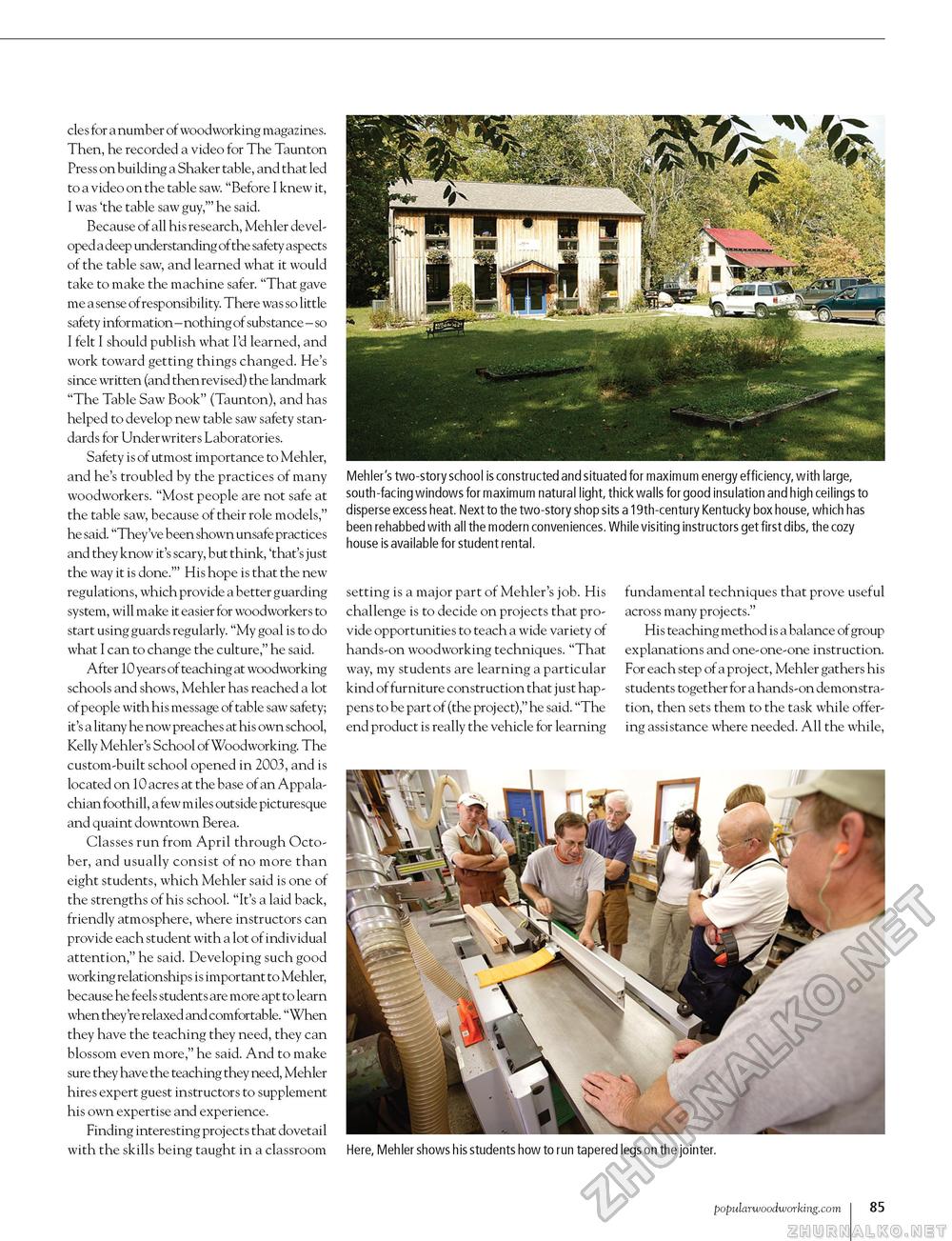Popular Woodworking 2006-06 № 155, страница 87
Mehler's two-story school is constructed and situated for maximum energy efficiency, with large, south-facing windows for maximum natural light, thick walls for good insulation and high ceilings to disperse excess heat. Next to the two-story shop sits a 19th-century Kentucky box house, which has been rehabbed with all the modern conveniences. While visiting instructors get first dibs, the cozy house is available for student rental. cles for a number of woodworking magazines. Then, he recorded a video for The Taunton Press on building a Shaker table, and that led to a video on the table saw. "Before I knew it, I was 'the table saw guy,'" he said. Because of all his research, Mehler developed a deep understanding of the safety aspects of the table saw, and learned what it would take to make the machine safer. "That gave me a sense of responsibility. There was so little safety information - nothing of substance - so I felt I should publish what I'd learned, and work toward getting things changed. He's since written (and then revised) the landmark "The Table Saw Book" (Taunton), and has helped to develop new table saw safety standards for Underwriters Laboratories. Safety is of utmost importance to Mehler, and he's troubled by the practices of many woodworkers. "Most people are not safe at the table saw, because of their role models," he said. "They've been shown unsafe practices and they know it's scary, but think, 'that's just the way it is done.'" His hope is that the new regulations, which provide a better guarding system, will make it easier for woodworkers to start using guards regularly. "My goal is to do what I can to change the culture," he said. After 10 years of teaching at woodworking schools and shows, Mehler has reached a lot of people with his message of table saw safety; it's a litany he now preaches at his own school, Kelly Mehler's School of Woodworking. The custom-built school opened in 2003, and is located on 10 acres at the base of an Appalachian foothill, a few miles outside picturesque and quaint downtown Berea. Classes run from April through October, and usually consist of no more than eight students, which Mehler said is one of the strengths of his school. "It's a laid back, friendly atmosphere, where instructors can provide each student with a lot of individual attention," he said. Developing such good working relationships is important to Mehler, because he feels students are more apt to learn when they're relaxed and comfortable. "When they have the teaching they need, they can blossom even more," he said. And to make sure they have the teaching they need, Mehler hires expert guest instructors to supplement his own expertise and experience. Finding interesting projects that dovetail with the skills being taught in a classroom setting is a major part of Mehler's job. His challenge is to decide on projects that provide opportunities to teach a wide variety of hands-on woodworking techniques. "That way, my students are learning a particular kind of furniture construction that just happens to be part of (the proj ect)," he said. "The end product is really the vehicle for learning fundamental techniques that prove useful across many projects." His teaching method is a balance of group explanations and one-one-one instruction. For each step of a project, Mehler gathers his students together for a hands-on demonstration, then sets them to the task while offering assistance where needed. All the while, Here, Meh ler shows h is students how to run tapered legs on the jointer. popularwoodworking.com I 85 |








